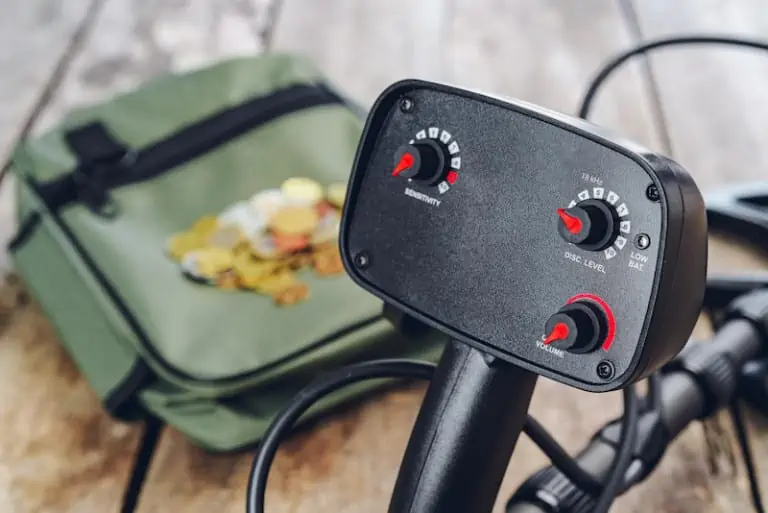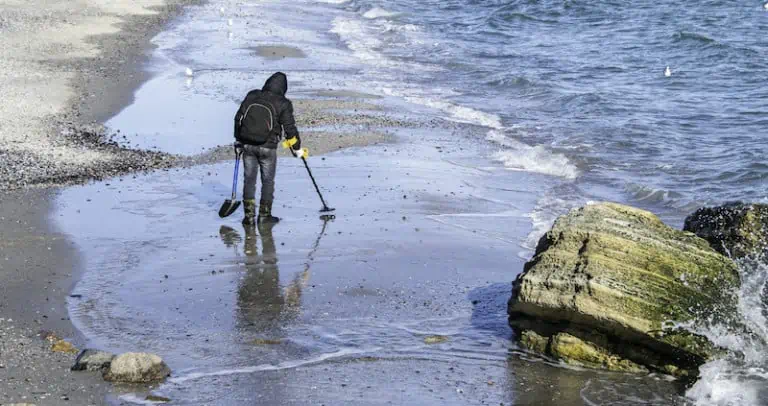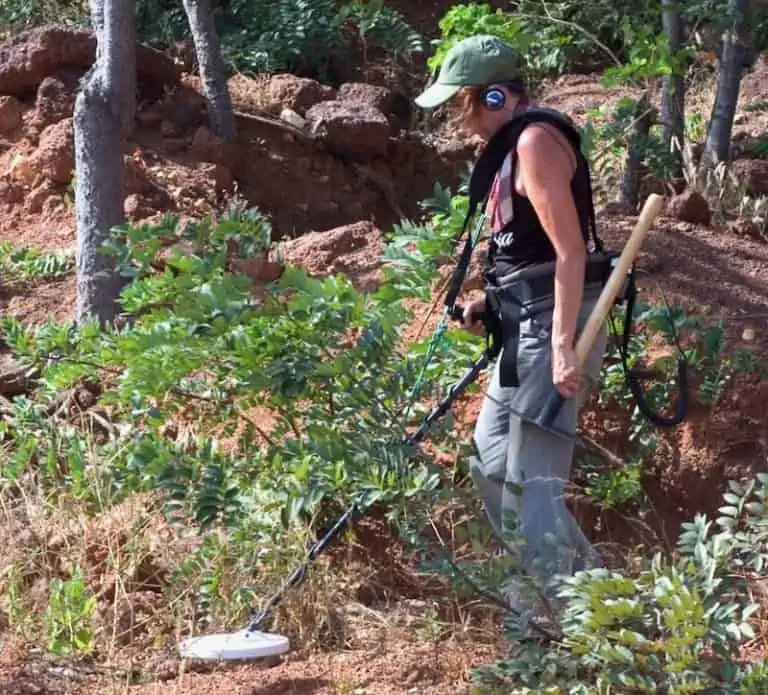How to Use a Metal Detector Very Easily

Metal detecting is a hobby that has been around for decades. Fisher Research Labs, founded in 1931 by Dr. Gerhard Fisher, was the first to receive a patent for the metal detector. Fisher was a German immigrant who studied electronics at the University of Dresden, and later, a research engineer in Los Angeles. In the 1920s, he received a patent for the first aircraft radio direction finders.
Dr. Albert Einstein was familiar with Fisher’s work and stated that this technology would lead to worldwide use of radio direction finders. The first metal detector, the M-Scope, was 2 wooden boxes with copper coils, vacuum tubes, and other electronic components. Demand grew for this early metal detector, and Fisher’s initial patent was expiring. Other manufacturers jumped in to produce metal detecting equipment.
Metal detecting has gained in popularity due to increased technological advancements that have made the process of finding buried treasure simple. There are many reasons to enjoy the hobby of metal detecting:
The thrill of the hunt: there is nothing like hearing that response from a metal detector indicating something buried beneath you.
The thrill of historical finds: It is incredibly rewarding to find an early coin, button, or other relic in a location where historical figures once dwelled.
Getting outdoors: A lot of us are inside a lot more than we would like to be. Metal detecting is a great reason to get outside and enjoy nature.
Getting exercise: Not only are more of us stuck indoors these days, but many of us lack the recommended exercise. Metal detecting gives you that! Walking, swinging a detector, and digging are all great forms of exercise.
It can be profitable: Depending on what you are looking for or what you are finding, metal detecting can be quite profitable. Especially if you are finding jewelry or some type of precious metal.
Continue reading below for more information on how to use a metal detector.
Metal Detecting Basics
There are a few things required to begin metal detecting. First, you need a good quality metal detector. There are 2 main types of metal detectors, which we will discuss more in depth below: VLF and PI. You do not have to spend a fortune on a the latest, state of the art metal detector.
And in fact, I do not recommend you do, even if you can afford it!
Higher end models tend to have more complex and complicated settings and adjustments, and they are simply frustrating for new detectorists. Most major manufacturers of metal detecting equipment make beginner models. These models are simple to use and give you a basic understanding of how metal detecting works without all the complicated settings.
Types of Metal Detectors
As mentioned previously, there are 2 main types of metal detectors: Very Low Frequency (VLF) and Pulse Induction (PI). VLF is the most common type of detector.
VLF detectors use a continuous sine wave that goes into the ground. The wave then charges a target and releases and eddy current which sends an alert back to the metal detector’s control box alerting to a target. A VLF detector uses 2 different coils: a transmitter coil and a receiver coil. The transmitter coil is the outer coil loop. Electricity is sent along this wire one direction then another, thousands of times per second.
The number of times the current’s direction changes per second establishes the frequency of the metal detector (more on that below). The receiver coil is the inner loop of coil which acts as an antenna to pick up and amplify frequencies from targets.
A PI detector works differently by sending pulses into the ground rather than waves and measures the speed of pulse decay to relay pertinent information to the detectorist. Each pulse creates a short magnetic field. As the pulse ends the magnetic field reverses polarity and collapses suddenly which causes a sharp electrical spike.
This spike lasts just microseconds and causes another current to run through the coil. This current is the reflected pulse. Another pulse is sent, and the cycle continues. When over a target, the reflected pulse takes longer to disappear which allows the detector to signal the detectorist that a target has been found. PI detectors are usually more expensive than VLF detectors but are inherently immune to the effects of saltwater.
Types of Search Coils
There are 4 types of search coils: mono coils, Double-D coils, smart coils, and concentric coils. Mono coils are for use with PI metal detectors and are the deepest searching coils. However, they can be more difficult to ground balance in highly mineralized soils. A Double-D search coil has the shape of 2 capital Ds back-to-back. This provides good stability, good depth, and great ground balancing.
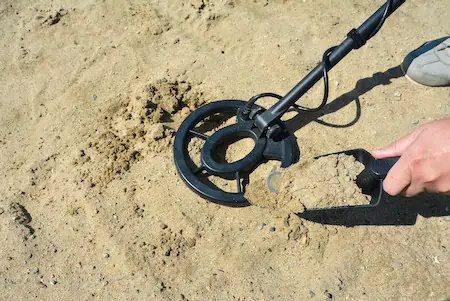
Areas with high electromagnetic interference or soil mineralization would be a good use of the Double-D. Smart search coils contain advanced circuitry that interacts with the control box giving the user many advantages. These coils have features like advanced signal boosting, quicker target response, increased depth, and improved immunity to electromagnetic interference.
They also have advanced sensitivity to small, deep targets. Concentric search coils produce a cone shaped search pattern. They require more sweep overlap but produce the most accurate pinpointing (narrowing down more precisely where a target is) of any search coil.
Shape & Size of Search Coils
The shape of a search coil can be an important factor for detectorists. Round search coils are the most common because they are stable and offer the best performance. Non-circular shapes are used where there is a need based on environmental or physical factors. Elliptical search coils make it easy to maneuver around bushes or between rocks, while covering the same amount of ground as a round coil. Open web coils are lighter and reduce drag and are best for underwater detecting as the water can pass through the webbing of the coil.
The size of a search coil can change the detection depth and sensitivity. The larger the coil, the more ground you cover, and the deeper it can go. Large coils, however, have less sensitivity to small targets and are more susceptible to electromatic interference. This means you must adjust the sensitivity of your detector to compensate. Small search coils have a greater sensitivity to small, shallow targets and are less susceptible to electromagnetic interference.
Important Features
There are many important features to look for in a good, beginner metal detector. There are models where these features are not adjustable, and the detector is simply turn on and go. But other models have basic settings that are valuable to learn so you can adjust your new metal detector to find what you are looking for. All these features will help you learn how to use a metal detector.
Detection Mode
Many detectors come with preset detection modes that focus on various objects. The most common modes are jewelry, coins, relics, and all metals. These modes are programmed to be more sensitive to the desired targets, while not alerting as frequently on undesirable metals.
Discrimination
Discrimination is a feature that allows you to distinguish your desired target from trashy targets. This feature helps filter out a silver necklace, say, from a tin can sitting very nearby. This way, you save time not digging trash and spend more time finding what you are looking for.
Many models have various type of discrimination settings, some manual and some automatic. If you are looking for relics or gold, discrimination is not as necessary as it could block some important signals from getting through.
Sensitivity
Many metal detectors are built with high sensitivity. This means they can pick up signals under high soil mineralization or saltwater noise. Sensitivity can also increase the chances of finding relics or other metals that have corroded under weather or soil conditions for decades.
Frequency
The frequency of a metal detector can be important to a detectorist. Each frequency is good for finding a specific type of metal. Lower frequencies are great for finding highly conductive metals like silver, while higher frequencies are best for finding lower conductive metals like gold. Frequencies can range from 1.5 kHz to 100 kHz.
Some metal detectors operate with multiple frequencies or adjustable frequencies, too. Typically, higher frequency metal detectors do not search as deeply as lower frequency metal detectors. Several models are built to compensate for the lack of depth with higher frequency searches.
Ground Balance
Ground balance is important because it helps filter out the effects of iron rich soils, saltwater, and other conditions that can affect a detector’s performance. For example, I live in northeastern Utah, and our soil is highly mineralized.
There are many locations in our mountains that I must run my detector on Beach Mode just to filter out the ground noise (Beach Mode would tune the detector to filter out the effects of saltwater, which is highly conductive). If the detector is not ground balanced, the signals I hear are weak or nonexistent, and the detector can overload and shut off.
Target ID
Target ID is a visual or audio cue that alerts the detectorist to a possible target. Target ID can be achieved in many forms, depending on the detector. Some have a gauge and needle where the needle will point to a specific metal range depending on the signal. Others feature numerical target ID, where each metal is assigned to a specific numerical value.
Yet others simply have audio cues alerting users to the presence of metals. Each metal can have a slightly different audio feedback so users can eventually learn to differentiate between metal types.
Metal Detecting Tips and Tricks
Here are a few helpful tips to consider when using metal detectors.
Do Not Ignore Iffy Signals
It is especially important when you are a beginning detectorist to dig all signals. Some signals will sound weak or may fall within the range of undesirable metals. However, it is important for you to dig all targets, at least initially, so you can ensure your detector alerts you properly and you are not missing anything that could be a potentially good find.
At the very least, you are removing trash targets so when you rescan the area, any hits you get have a higher chance of being good targets.
Keep Extra Batteries With You
It is incredibly irritating to be out somewhere and your detector dies. Keeping a new set of batteries with you (or a charging cable and battery pack if your detector has rechargeable battery packs instead of standard AA or 9-volt batteries). This pays off especially if you are far away from civilization.
Take a Handheld Pinpointer
While most metal detectors have a built-in pinpoint mode, it is helpful to have a handheld pointer along with you. These make it simple and quick to zero in on a target. You will have to dig much less and will be able to spend more time hunting good targets.
Hunt After Rainstorms
Next time you have a rainstorm, head out while the ground is still wet. If your metal detector is fully waterproof, hunting while it is still raining a little will not hurt your machine. It is easier to dig in wet dirt than hard, dry, compacted dirt.
Secondly, the wet ground provides better conductivity so you can find targets deeper. Rainstorms also wash away layers of soil so check at the bottom of muddy hills and in washes.
Wearing Headphones (and when not to)
Headphones can help you hear faint signals better. They can also block outside noise and make your detector quieter for those around you. However, they are not great in every situation. For example, I do most of my metal detecting in the remote woods. I would not wear headphones in those situations simply because I must be aware of what is around me. We have several large predators in my area, most notably mountain lions and bears.
I am in their territory so I keep my headphones off so I can hear what is going on. The only time I use them on the mountain is if I am detecting near camp and my family is nearby. This makes it easier for me to hear my targets while they continue their conversations.
Metal Detecting Hints
Here are some noteworthy hints that’ll help you on your next treasure hunt.
There is No Such Thing as a “Hunted Out” Site
Never stop searching or avoid going to a site because it has already been searched by you or someone else. If a site has produced significant finds already, odds are there is more to find. Adjusting your sensitivity, depth, or even coil type can help you bring “hunted out” sites back to life.
Rescan and Re-dig to Find More Treasure
Just because you have retrieved one item from a hole does not mean the area does not have more to offer. Always rescan a hole you have dug, rescan all dirt removed from the hole, and check the immediate area. This is especially important when coin shooting. Where there is one coin there is often more coins. So be sure to always rescan before filling your hole!
Use a Frisbee When Digging
This may sound a little silly. But using a frisbee when you dig can help you keep track of all materials you have removed from the ground. This is especially helpful when digging plugs. Plugs are circles of grass intended to re returned after the hold is dug.
You can turn the frisbee upside down and place the grass plug and all dirt removed right on it, then you can easily fill the hole without leaving it unlevel. People will appreciate this if you are searching on someone’s personal property (we will discuss this next), or in public areas like parks.
Getting Permissions
It can be tricky to get permissions to metal detect certain areas. Perhaps you live near an old home, that is currently owned or occupied, but falls within a historical category (like a Civil War era home).
There are untold and unknown treasures in these yards! It is of the utmost importance that you never trespass when metal detecting. If you know a piece of private property you would like to search, always get permissions from the homeowner prior to entering the area.
Know Your Laws
Knowing the laws surrounding metal detectors is one of the most important hints. Every city, county, and state have rules and regulations regarding detecting, and there are also federal level laws. For example, you cannot metal detect in any national park, state park, or historical site. You can, however, metal detect in national forests.
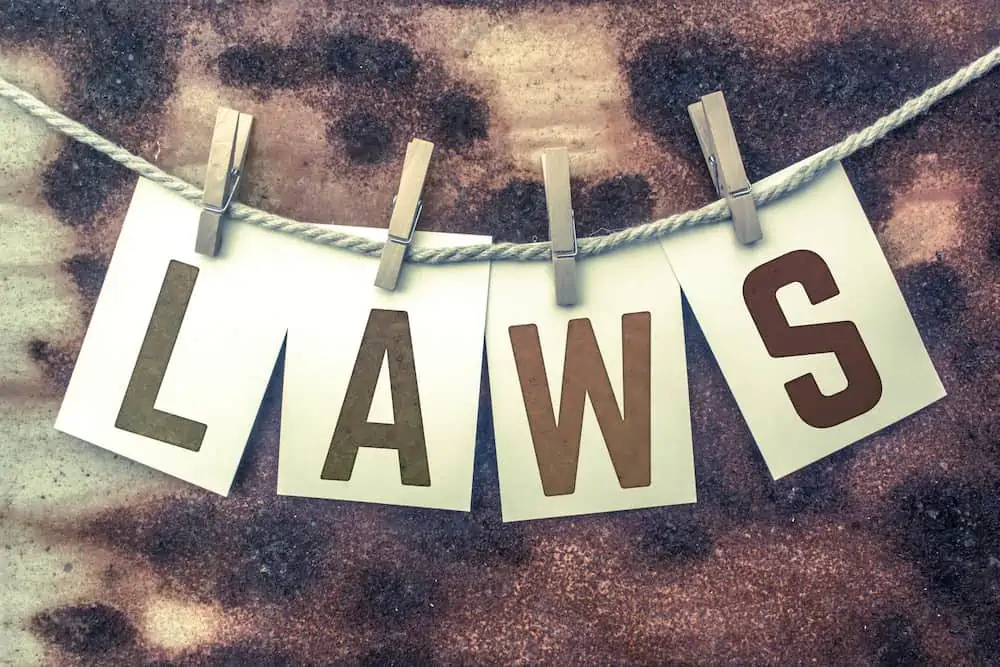
Cities and counties will also have regulations. When I lived near Boise, Idaho, we had to have a permit to detect within the city of Boise. Check with your local and state offices for full rules and regulations and follow all state and federal laws. You can be fined heavily, arrested, and have all your items confiscated if you fall outside the law.
Be Aware of Historically Important Finds
As part of the Antiquities Act and Archaeological Resources Protection Act, any historically important or culturally important find should be reported. It is important not to detect on Native American reservations, or anywhere where significant historical finds have occurred. If you have special permissions, that is one thing. But you may not remove culturally or historically important items. They should always be reported to your state’s archaeological authorities.
Research
It is important to do some research prior to metal detecting. It will do you no good to buy an expensive gold-specific metal detector if your search area is not known to contain gold. Research can save you time and money. Research will help you determine what types of materials you can search for.
For example, if you live in the East or South, you may be able to find old war relics. While I live in the West, so I can find precious metals, and old western pioneer leavings. Ghost towns can be a lot of fun to metal detect, too!
Always Follow the Code of Ethics
It is important to remember you are an ambassador for all metal detectorists. Restrictions are already tight on us, so do your part to ensure we can all enjoy this hobby! There is a specific metal detecting code of ethics. Read it. Study it. Be it.
Tools Needed for Metal Detecting
While a metal detector and shovel are all you really need to get started, there are a few items I would recommend. Firstly, with your shovel, you will want an easy to pack around one that is good quality. Low quality digging tools can bend or break, rendering them useless. It does you no good to be on top of a target without anything to dig it out! I like to have a short shovel as well as a good hand digging tool. The shovel can help in areas where you must dig a lot, while the hand shovel can help refine your digging.
If you plan to hunt on beaches, you will want a sand scoop. A sand scoop makes it easier to sift through the sand as it is almost impossible to dig a decent hole on a sandy beach. The sand just constantly refills it as it shifts. Sand scoops have holes in them so the sand can filter out while the target stays inside. These scoops can have long or short handles, depending on your need and preference.
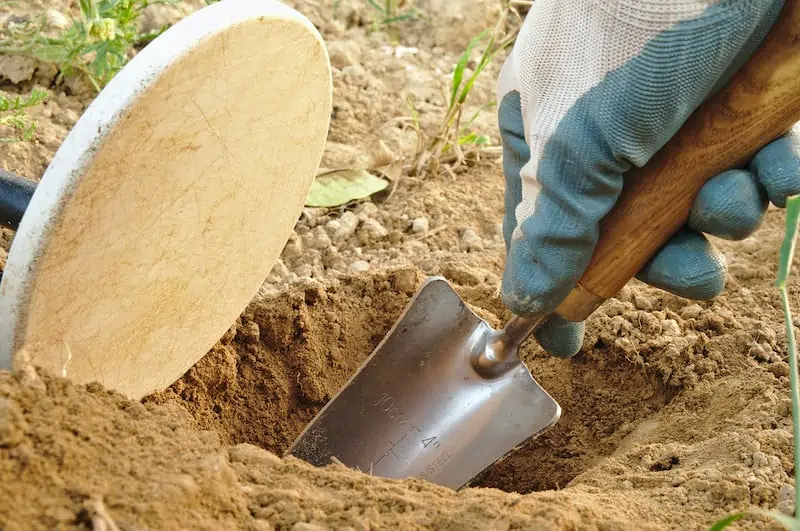
If you will be prospecting with your detector, keep a rock pick handy. These can help when you find a target in rock that you simply cannot dig. If you are looking for gold, it typically hangs out near or on bedrock, so you may need a pick to get to it.
I really like to have a finds pouch along, too. It gives you a place to store your hard dug treasure while you continue your hunt. I also recommend bringing along a shopping bag or something to hold trash. You will find trash. Possibly a lot of trash. And as a good detectorist, and decent human, we should pack out any trash we find. Leave the area better than you found it! If you are looking for relics, you may come across a very delicate item. I would recommend having a hard plastic case with dividers and cotton or cloth to keep them safe.
It is also important to bring along a backpack with some essentials if you will be hunting in the woods or far away from civilization. It is especially important to bring along water, as you can dehydrate during any season. Fun fact, people get more dehydrated in colder months because you simply do not feel as thirsty as during hot weather.
Take along some snacks or a lunch, sunscreen, bug spray, and a hat. If you are in a very remote area, you may consider bear spray or a noise maker to keep large predators away.
If you do not like dirty hands, I recommend taking some gloves with you. Not only do they help keep your hands cleaner, but they can keep you from getting scratched or poked by vegetation (we have a lot of cacti here in Utah, and gloves can save you from their mean little stickers!). Just make sure you have ample range of motion with your gloves on. There are many types that are thin yet durable.
If you will be hunting where there is no cell service, I always recommend taking a map or GPS device, or both. Ensure you have studied your maps and you know your own whereabouts. And make sure to let someone know where you will be hunting (a trusted family member or friend) so they can know where you will be if you fail to return.
I do most of my metal detecting in the woods, and there is rarely cell phone service. So, I always tell my family where we will be, our expected return time, and when to start looking for us.
Best Starter Metal Detector
This is a difficult question, as there are many great starter metal detectors. But if I were to name a single winner, it would be the Nokta Makro Simplex+. I have used this detector for 2 years now, and I absolutely love it! It was my 3rd metal detector and was very affordable. It is designed for beginning and intermediate detectorists. This is a simple to operate metal detector with plenty of features for more advanced detectorists.
One of my favorite features of this detector is it is fully waterproof up to 10 feet. This makes it great for use in and around water. The Simplex+ has 5 search modes (it comes with upgradeable software, so older versions may have only 4 pending the update):
- Field – Designed for relic hunting.
- Park 1 – Designed for coin shooting.
- Park 2 – Same as Park 1, but faster.
- Beach – Designed for use in highly conductive soils like saltwater areas or highly mineralized soils.
- All Metal – Will not filter any metal type: must be ground balanced to work properly.
This model has a large, simple to read LCD screen with backlight, built-in LED flashlight, and vibrate upon detection. This is a great feature for those with hearing impairment or for use underwater. This is a VLF detector and operates at an adjustable 12 kHz. This means you can shift the frequency slightly up or down to compensate for interference. It is lightweight, at just under 3 pounds. This model is a great turn-on-and-go machine, but once you get used to it, the settings make it more advanced.
As mentioned, I live in Utah. Northeastern Utah, to be more specific. We have ridiculously high soil mineralization here. All other metal detectors I have used here have given me lots of false readings. The Simplex+ gives me way less. I still get some, as is unavoidable. However, I have found that running the machine in Beach Mode compensates for our crummy soil. This detector makes it simple for even the newest detectorist to learn how to use a metal detector.
FAQ
Q: What is the best way to get familiar with my detector before heading out into the field?
A: Read your manual! That manual should become your best friend. Read it cover to cover. Then read it again. Each manufacturer knows best the capabilities of their machines. These manuals discuss the basics, the more advanced features, and proper care and maintenance. I always keep my manual in my detector bag in case the machine performs in a way I am not expecting or gives a weird readout.
Then I can check the manual and see why. Also, many manuals have a handy chart showing what types of metals will show on your LCD screen (if your model has one) or whatever type of target ID readout your model has. You should also conduct tests in your home with various types of metals by waving them over the detector coil. Note the readings the detector gives you for a better idea of what it will be like in the field.
Q: How do I know I will like metal detecting?
A: There is no simple answer for that. But you will not know if you do not try! You can always purchase a very inexpensive model (I have seen them at many stores for under $100) and try that before you make a big investment. I started with an $89 model, then upgraded to get to my Simplex+.
I was not sure I would like metal detecting, either. But the first time that cheap little detector rang, and I dug like a madwoman, and found an old railroad stake, I was hooked!
Q: What is the proper technique for swinging a metal detector?
A: Again, refer to your user manual for your detector. They almost all have illustrations of proper swinging techniques. But to put it briefly, keep the search coil parallel to the ground. Typically keep it 1 to 2 inches off the ground.
Slowly and methodically swing your arm back and forth while walking, keeping the detector at this same level. It will natural upswing slightly at the end of your swing. This takes some practice but will be picked up easily!
If you enjoyed this article, please “like” our Facebook page and be sure to revisit Discover Detecting for new content surrounding the metal detecting hobby!
You Might Also Want to Read:
